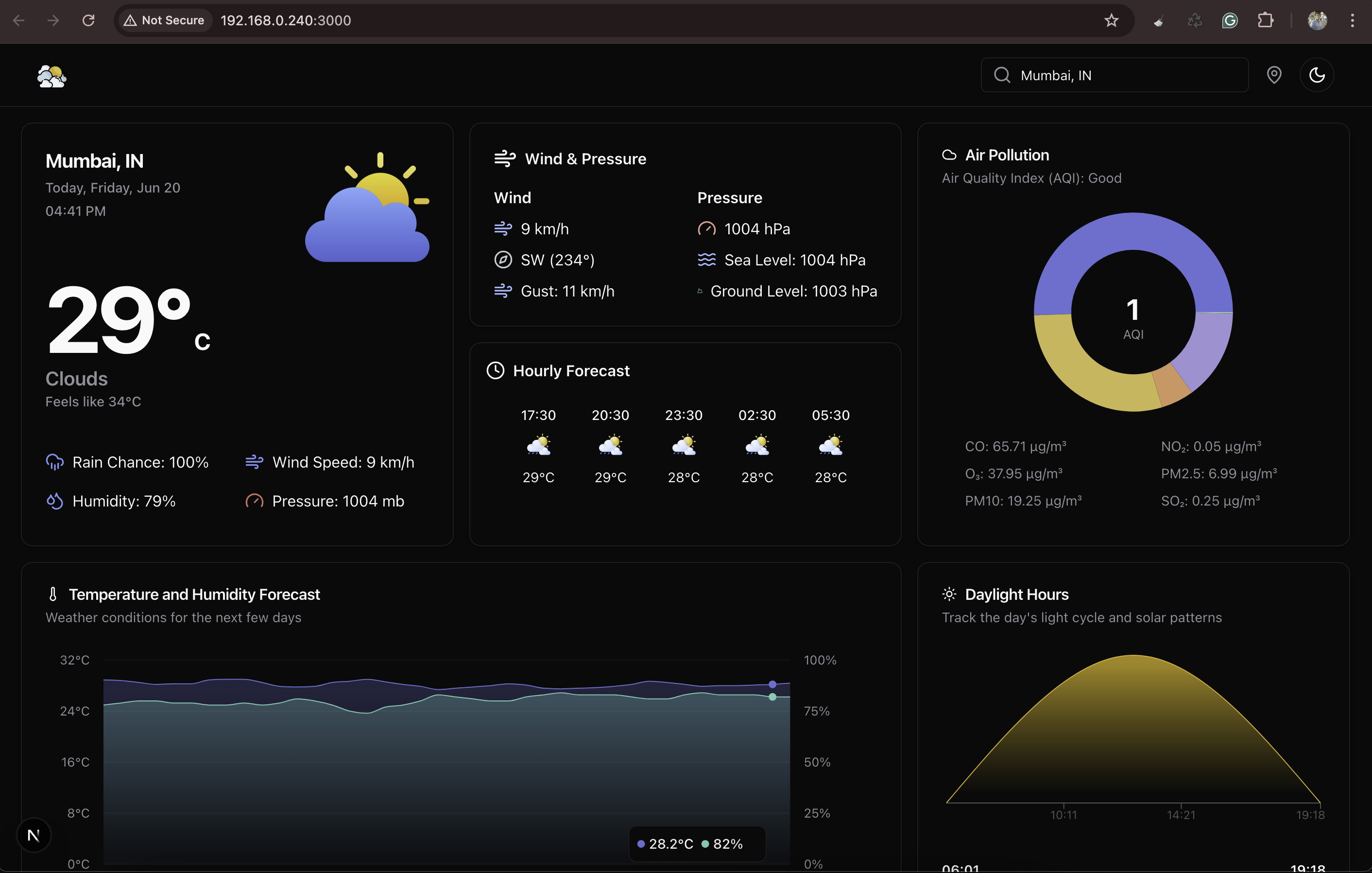Weather is a comprehensive weather application that provides real-time updates, forecasts, and detailed weather metrics. It's built with modern web technologies to provide a seamless and engaging user experience.
- 🌍 Real-time weather updates and forecasts
- 🌡️ Detailed weather metrics including temperature, humidity, and wind speed
- 🌆 Air quality monitoring and UV index tracking
- 🎨 Light/Dark theme support
- 🌐 Multi-language support
- 📱 Responsive design for various devices
- ♿ Accessibility-focused interface
- 🗺️ Interactive weather maps
- ⚡ Next.js - React framework for production
- ⚛️ React - JavaScript library for building user interfaces
- 📘 TypeScript - Typed superset of JavaScript
- 🎨 Tailwind CSS - Utility-first CSS framework
- 🎭 Radix UI - Unstyled, accessible components for React
- 🖼️ Lucide React - Beautiful & consistent icon pack
- 📊 Recharts - Composable charting library for React
- 🗺️ React Leaflet - Maps integration
- 🌙 next-themes - Theme management
- 🚨 React Error Boundary - Error handling
The development of Weatherly focused on creating a user-friendly interface with robust functionality:
- 🌍 Implemented core weather tracking features
- 🔍 Integrated OpenWeather API for accurate data
- 🎨 Developed responsive UI with theme support
- ♿ Implemented comprehensive accessibility features
- ⚡ Optimized performance across all devices Throughout the development process, I prioritized code quality, accessibility, and user experience.
To run Weatherly locally, follow these steps:
- 📥 Clone the repository to your local machine:
git clone https://github.com/ankit0183/weather-webapp-nextjs.git
cd weather-webapp-nextjs.git2.📦 Set up environment variables:
Create a .env.local file in the root directory with the following format:
Example env:
NEXT_PUBLIC_OPENWEATHER_API_KEY= 595aeccbd9b52cf1733f5c84d6f2aa95
NEXT_PUBLIC_BASE_URL= http://localhost:3000Note: You'll need to obtain an API key from OpenWeather to use the weather services.
3.📦 Install dependencies:
npm install
# or
yarn4.🚀 Run the development server:
npm run dev
# or
yarn dev5.🌐 Open http://localhost:3000 in your browser
This project uses the OpenWeather API for weather data. Ensure you comply with OpenWeather's terms of service when using their API.
Created with ❤️ by Ankit kanojiya 🌤️ Weather data provided by Google API OpenWeather API


